The
Decameron of Boccaccio
Translated into English by John
Payne
illustrated by Léopold Flameng
1886
Japan Paper Edition
3 volumes 6½" x 9½"
Binding by Minsky, 2020–2022
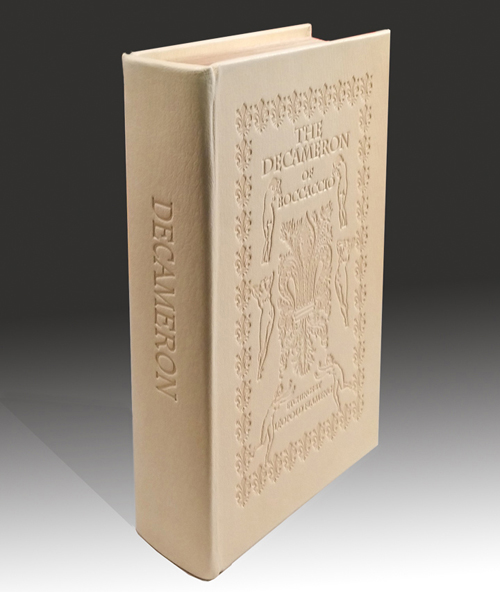
Blind
stamped alum-tawed goatskin
binding.
March 12, 2020 most of my customers, about
80 academic and museum libraries, closed
due to Covid. I was asked to hold orders that
were in process because nobody would be there
to receive them. Isolated in my studio, The
Decameron was the perfect project to
keep me occupied through the long pandemic—a
14th century book about the plague in which
ten young men and women spend ten days at a
country estate outside Florence to escape the
Black Death of 1348, and entertain each other
telling stories, many of which are bawdy, and
hilarious.
I
decided on this 1886 edition, the first
complete English translation. Previously
several of the raunchiest stories had remained
in the original Italian or French translation,
in order to bypass the British censors.
Here is Flameng's etching that illustrates one
of the previously untranslated tales, "Dom
Gianni and Pietro's Wife."

This edition avoided
censorship by limiting the circulation to
private subscribers.
I
expected to find a copy of the 1886 Villon
Society edition, but an online search brought
up this Japan Paper Edition. No publisher was
named. There was no copy of it in any WorldCat
library, though there was a Holland Paper
Edition that seemed otherwise identical. The
library entry suggested it may have been
issued by the translator. I ordered the Japan
Paper edition, which came in wrappers as
issued, clearly meant to be done into a nice
binding.
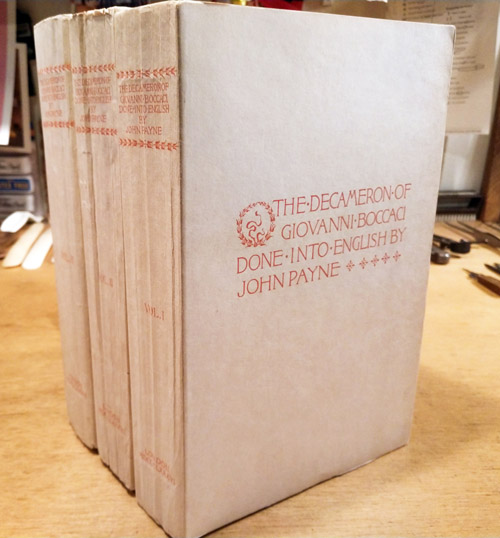
The Japan Paper Edition as it arrived in the
original wrappers, which are now bound in.
When a beautiful set of
the Holland Paper Edition turned up in
the original publisher's binding, I
acquired it. The gold stamped cover
appeared to have been made with the same
die that printed the wrappers above.
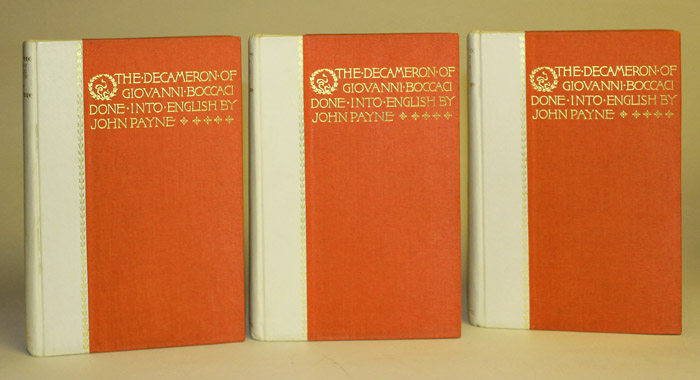
A close
examination indicates both editions were
printed from the same setting of type.
Thousands
of 500 year old books have
survived very well in tawed
skins. I decided to do a blind
stamped design in keeping with
the traditional use of that
material, and made a repeat
pattern border of the
Florentine Lily (actually an
Iris), symbol of Boccaccio's
city, the location of the story.
An Internet search for 14th
century examples turned up a
beautiful one! Fortunately I
saved the image, as I was never
able to find it again.
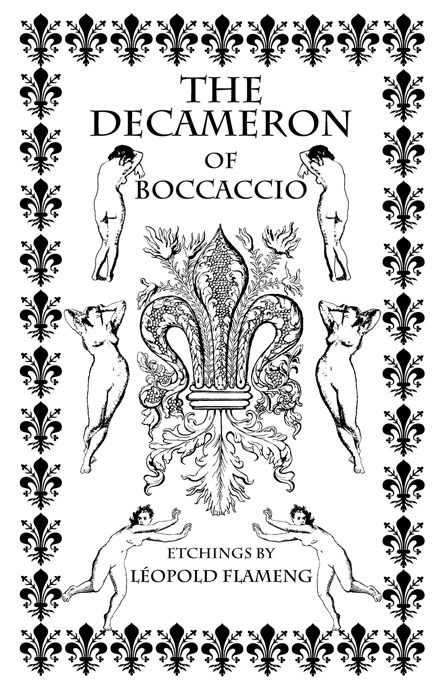 The design uses
some of the figures from Flameng's
engravings.
The design uses
some of the figures from Flameng's
engravings.
Everything had to be redrawn as solid
outlines.
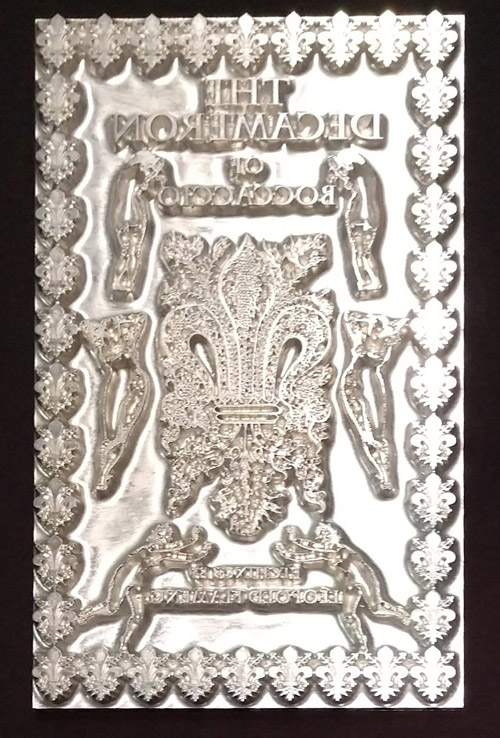
The stamping die.
Trying
to find out who published these editions was
futile. Was it issued by Payne to secure support
for a larger edition? Was he staying anonymous
in case the censors were ready to prosecute? Or
was it a pirate edition, issued after the Villon
Society published it? For now that mystery
remains. It took me nearly two years to finish The
Decameron, and that's how long many of
the libraries remained closed.
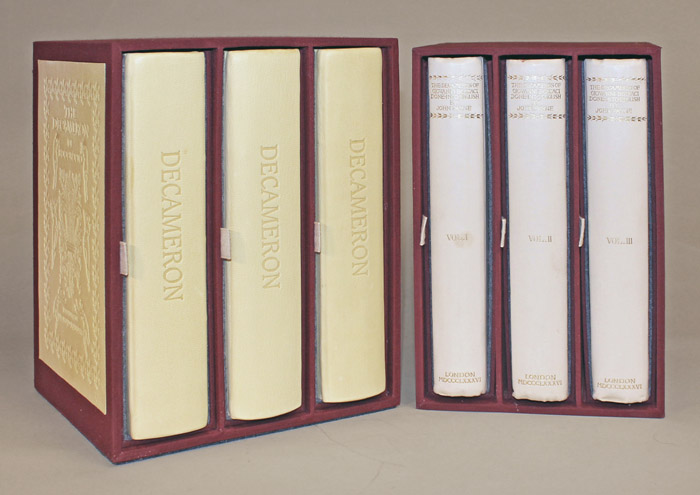 The
two sets in their slipcases.
The
two sets in their slipcases.
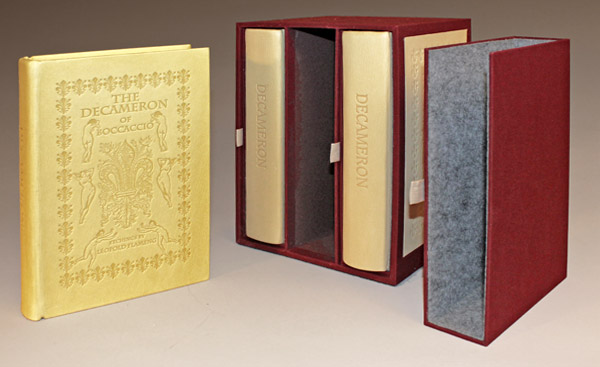
Each
volume is in a felt-lined inner tray
with open top for easy removal.
The color of the alum-tawed goatskin
looks different in different
lighting.
Endpaper in the Japan
Paper Edition.
If you would
like to see more about this process,
Click
here for an album with more than
100 photos
|
|